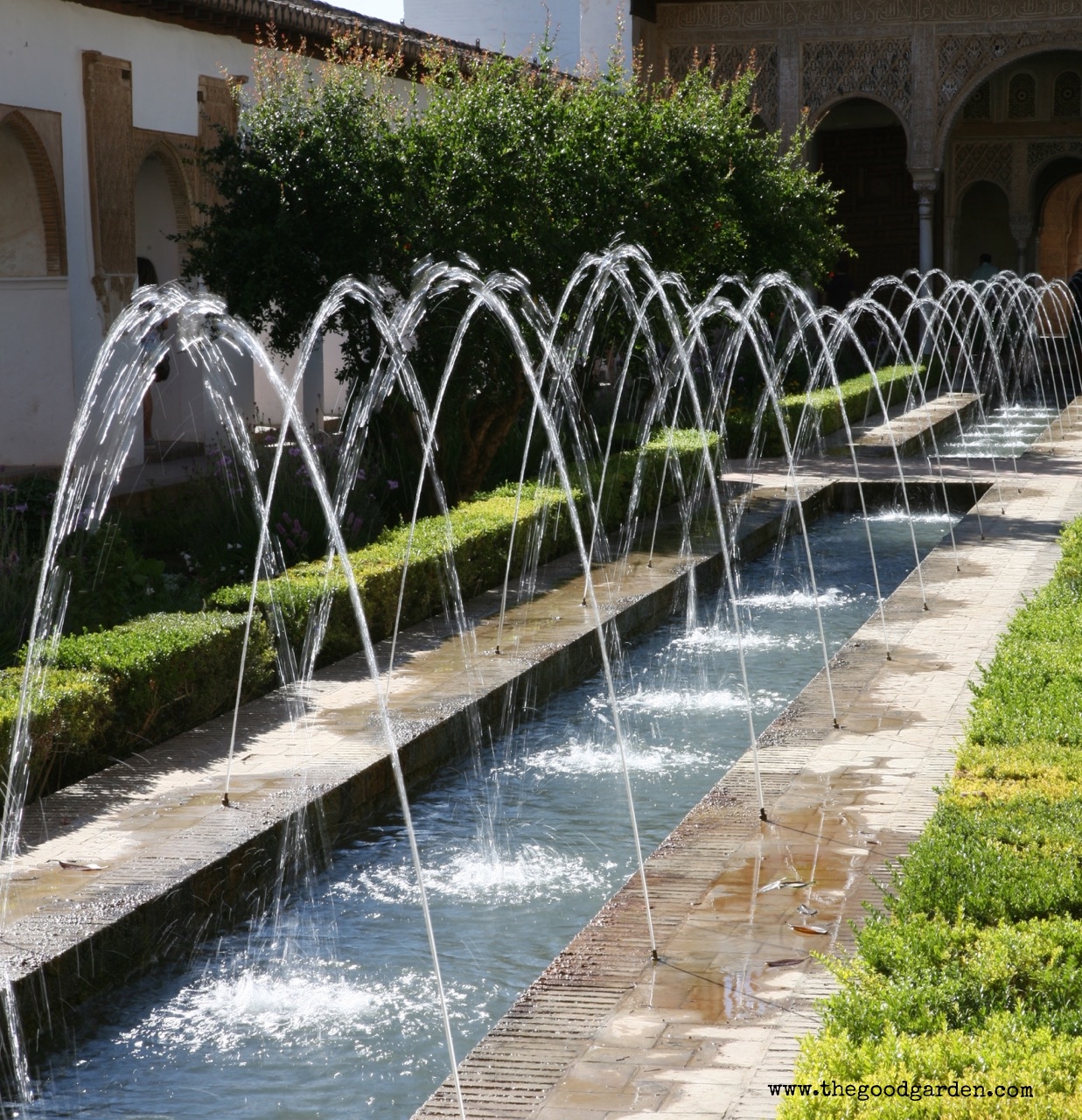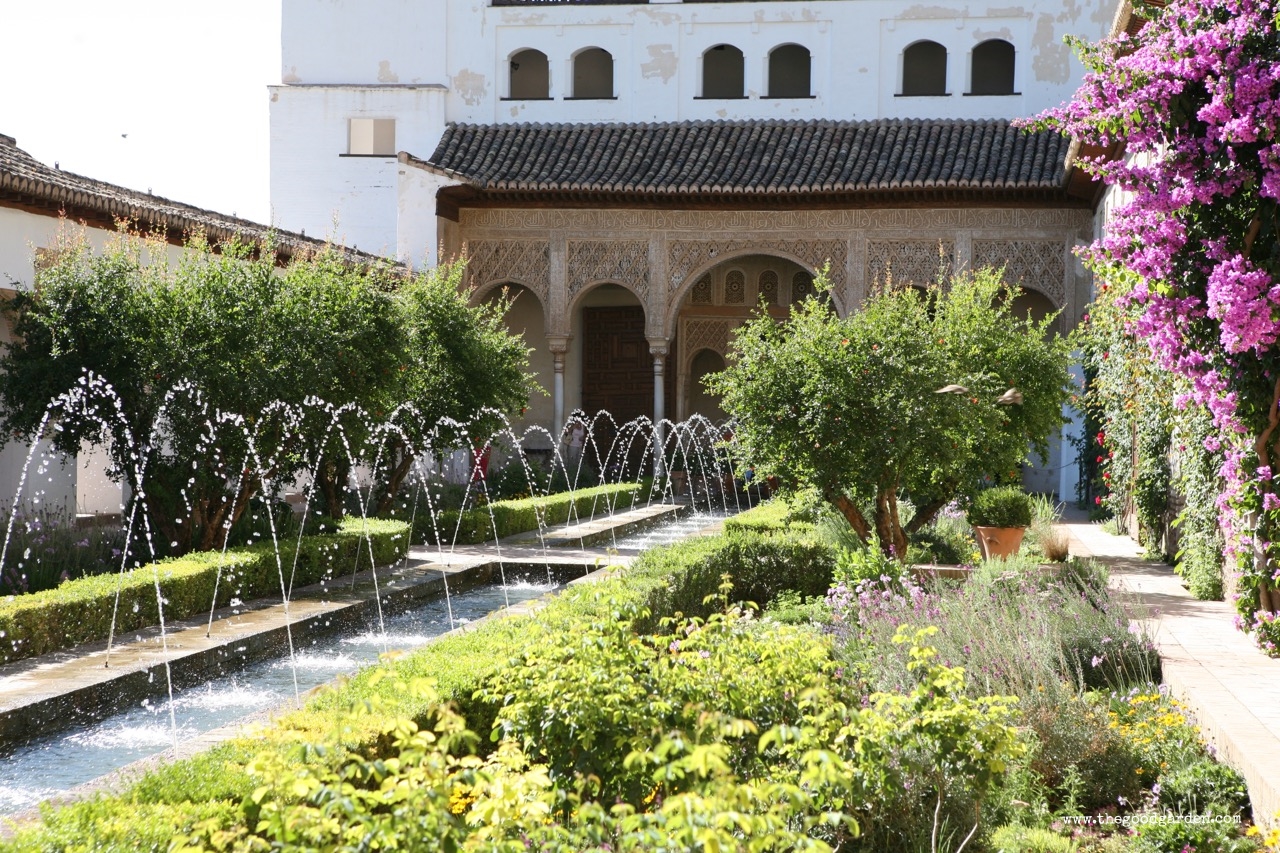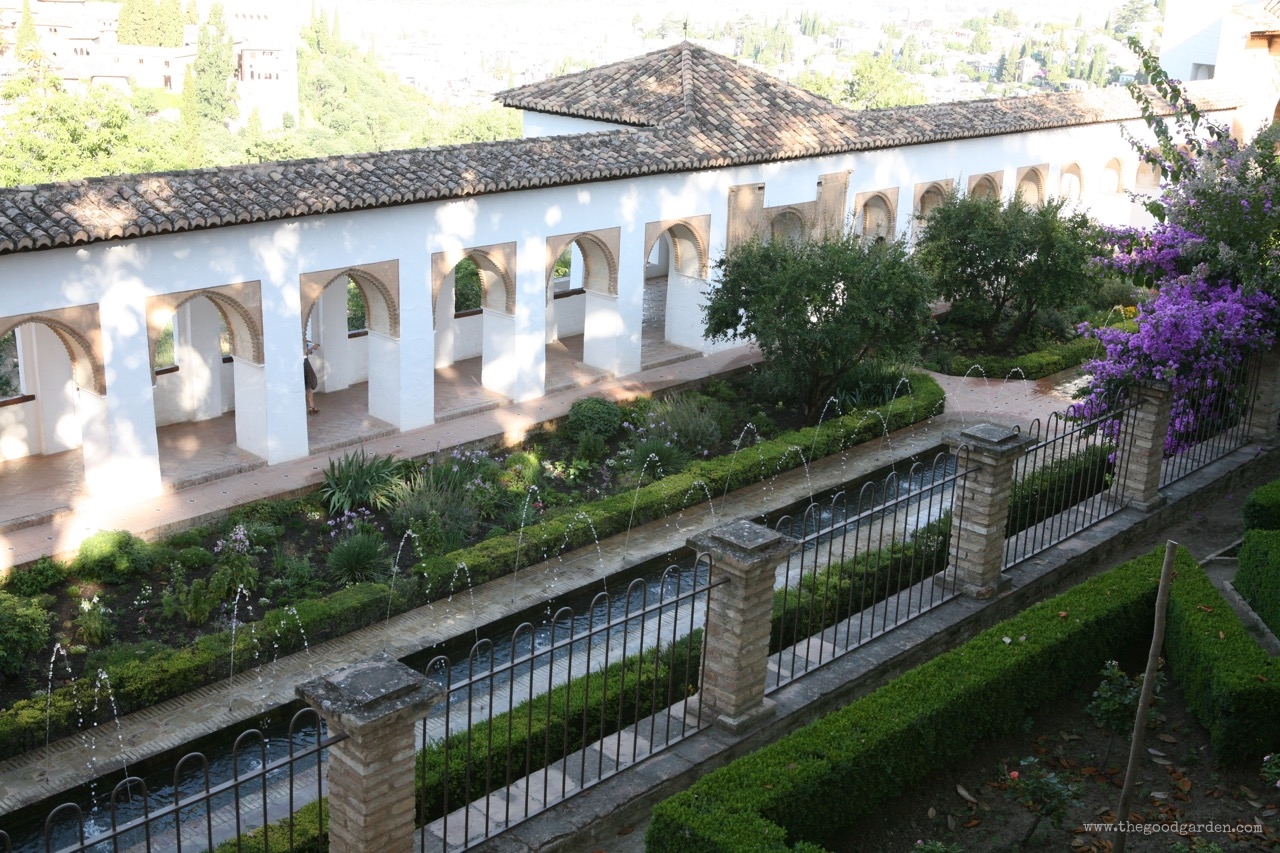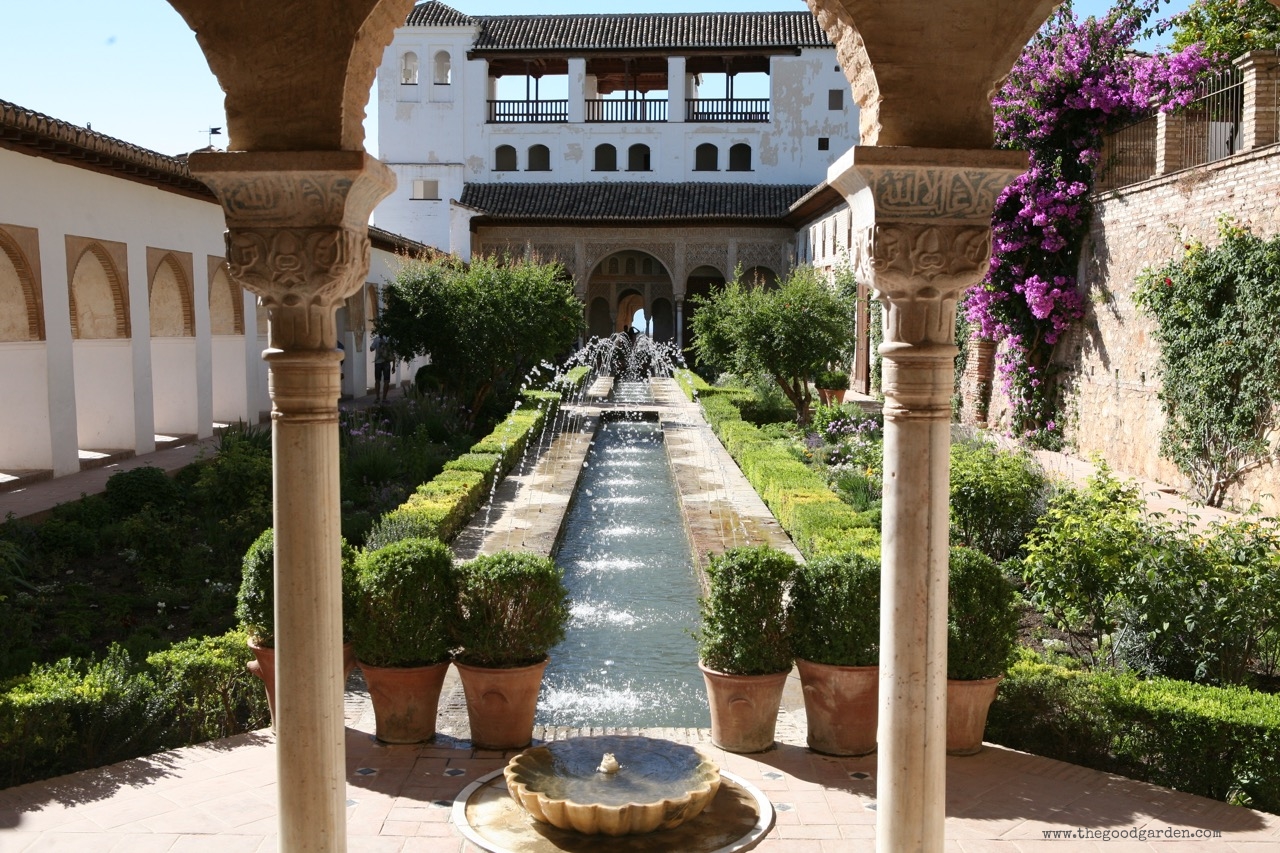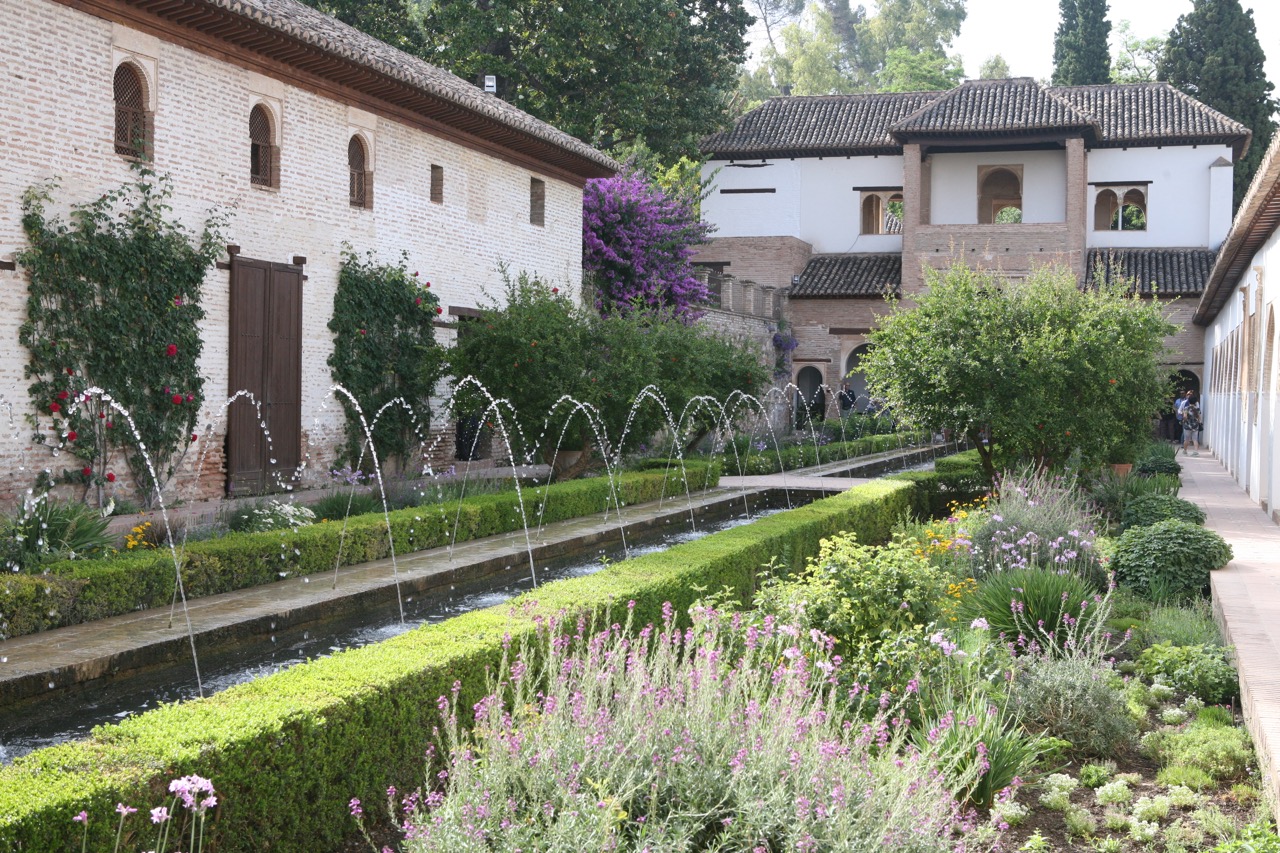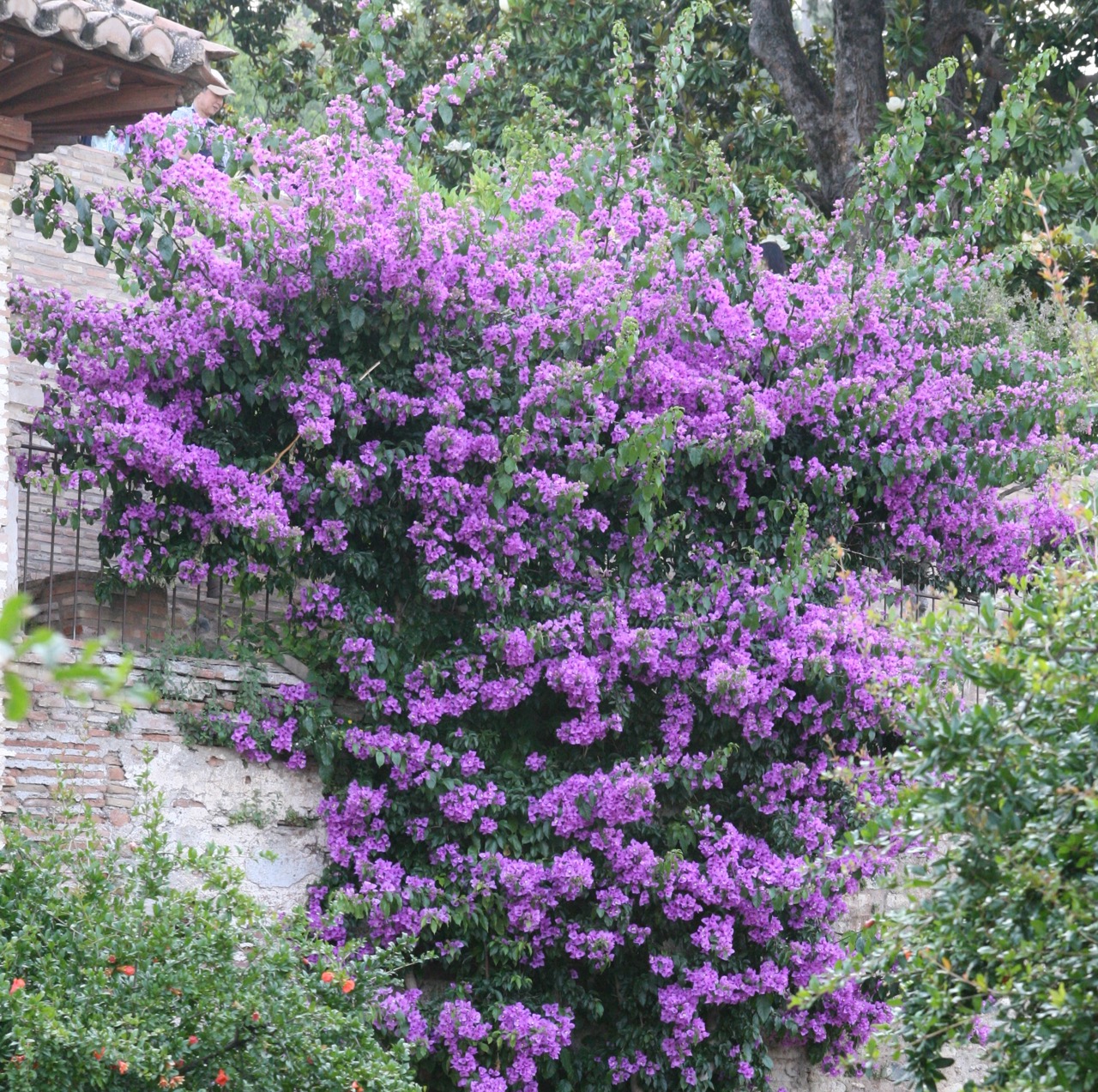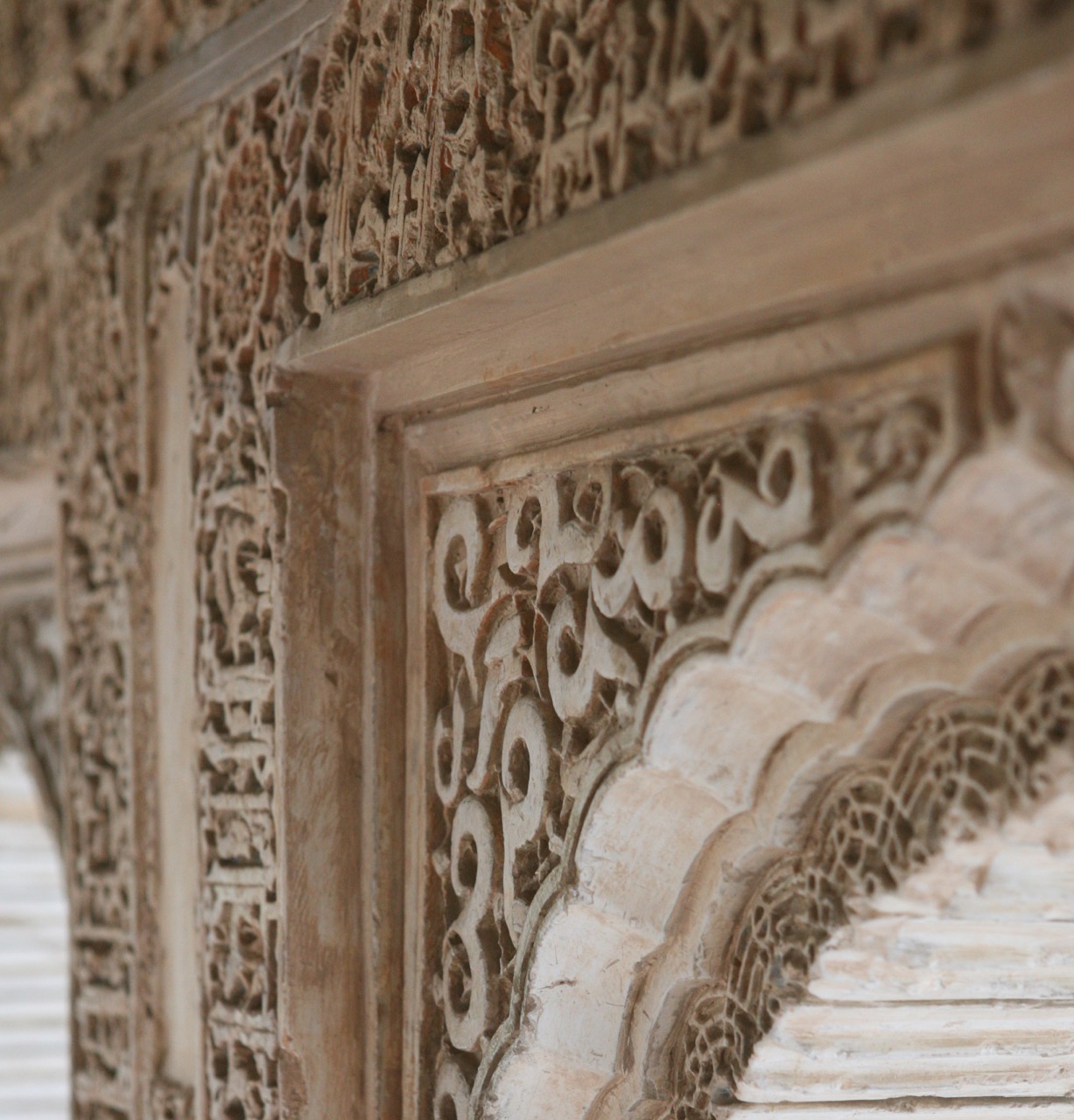The Christian cloister garden and the Islamic garden flourished during the middle ages. They share a number of design features including enclosure, geometry, and explicit references to reflection and spirituality.
Differences in religious emphasis, however, resulted in quite different garden styles. The Christian cloister, set up for contemplation and prayer, is packed with literal depictions of saints and Christ. Plant material, while beautiful, clearly served as food, as medicine or as decoration for the altar.
In contrast, the Islamic garden is a representation of the paradise described in religious texts. Crisscrossing streams of water and pathways reference the four rivers leading to Eden. Plant material is luxurious and colorful. Ornamentation is figurative; it celebrates nature without literally representing living beings, a nod to the teaching that only God can make living things. Bountiful water inside the garden is a powerful contrast when the garden sits in a climate as arid as the one pictured above in Granada’s Generalife garden.
My favorite element of the Islamic garden is the seamless interweaving of indoor and outdoor space. Interior living space opens up to the garden; the garden then connects to and flows into another indoor space.
The garden I’ve photographed here is one of the most famous examples of an Islamic garden. It’s the Patio de Acequia in Granada’s Generalife. The name Generalife is derived from the Arab word Jianan al-Arif, which translates literally as “The Paradise Garden of the Overseer.”
Built in the 1300’s as part of the Sultan’s summer palace, the garden is bisected by a water canal and a stone walkway. Plant material is lush and colorful, selected for its beauty. It delights the senses on many levels: simple water jets sprinkle and provide rhythm; box hedges provide order; climbing roses and bougainvillea lift the eyes; a pool of water reflects the sky, and the fragrance of thousands of flowers permeates the air.
As with many historic gardens, this one has evolved over time. The water jets are ‘new’ - as of the 1500’s - and the planting beds have been raised. Originally the tops of the plants were meant to reach the same level as the walkway: to simulate a living Persian carpet. A covered pavilion once marked the central point where the metaphorical four rivers of Eden met. Even with these changes, this garden remains an icon.
When visiting the Generalife be sure to order tickets on-line well in advance; the number of tickets each day is limited and they do sell out.

